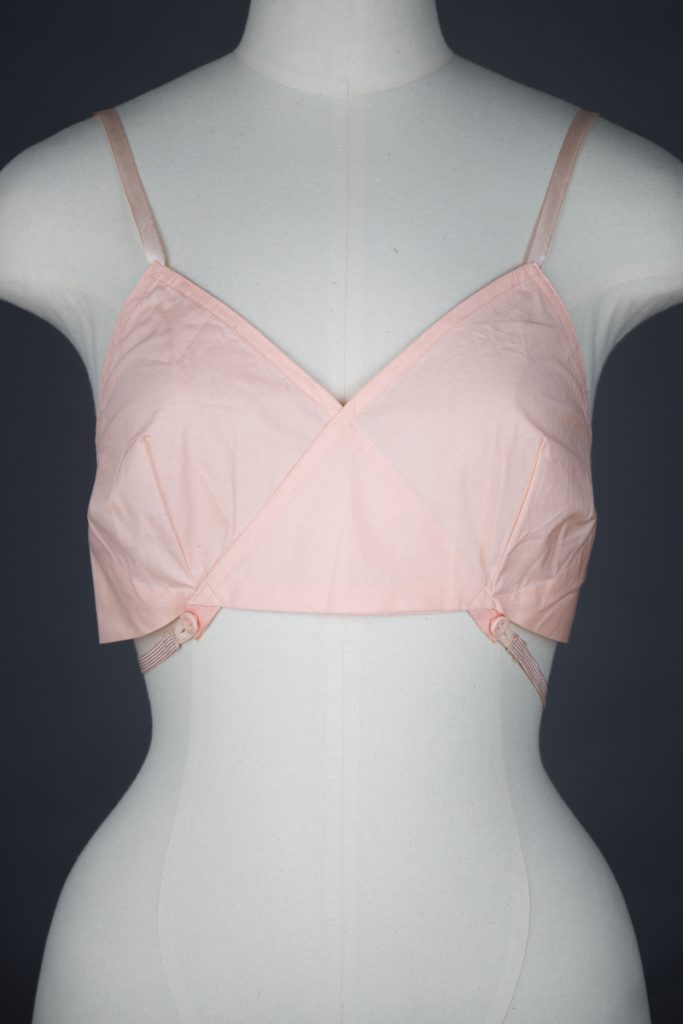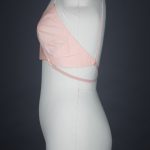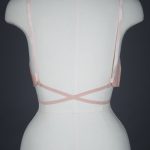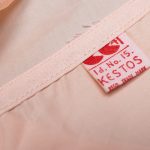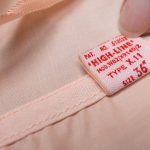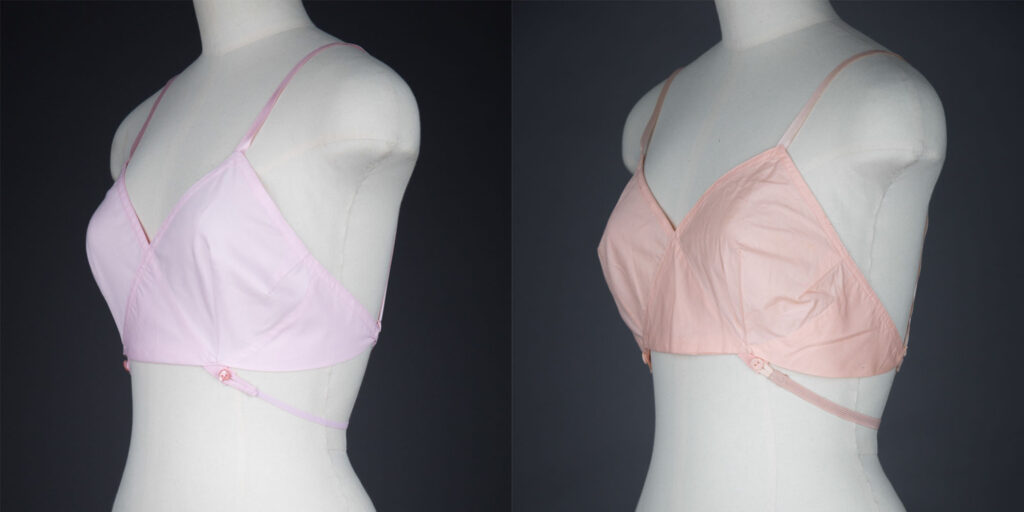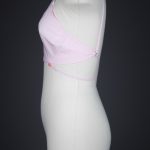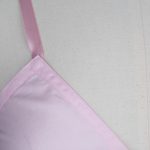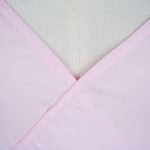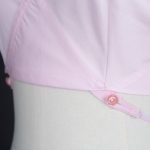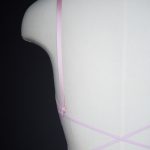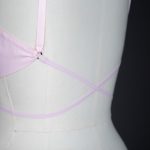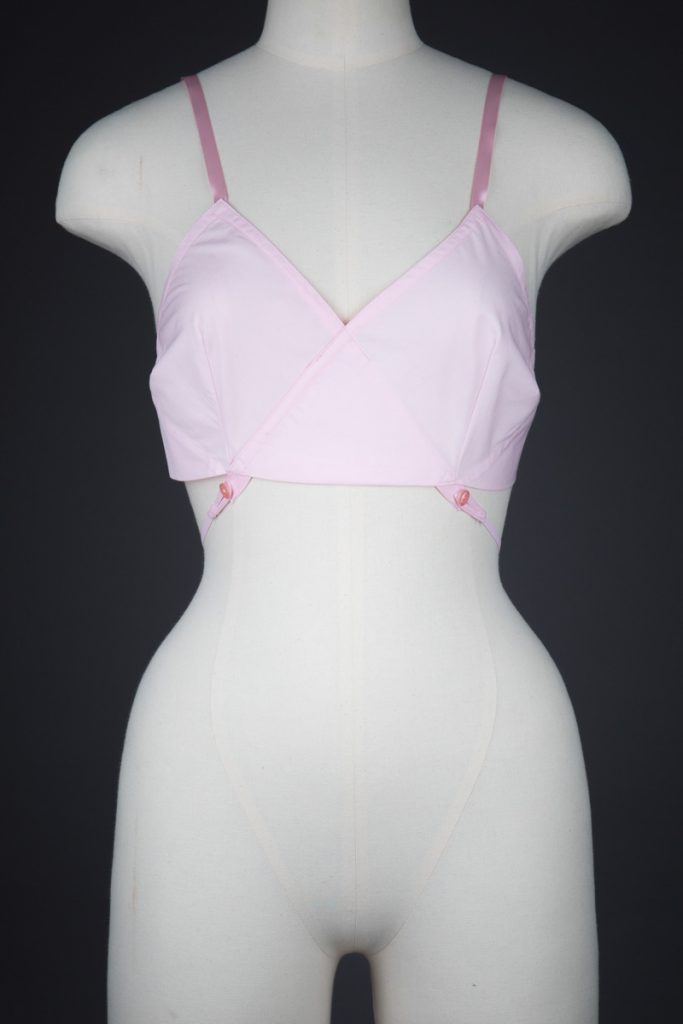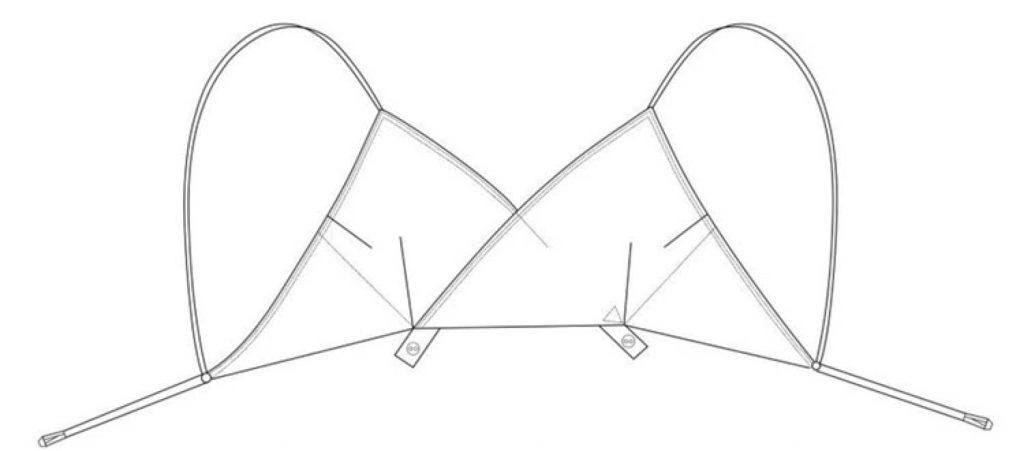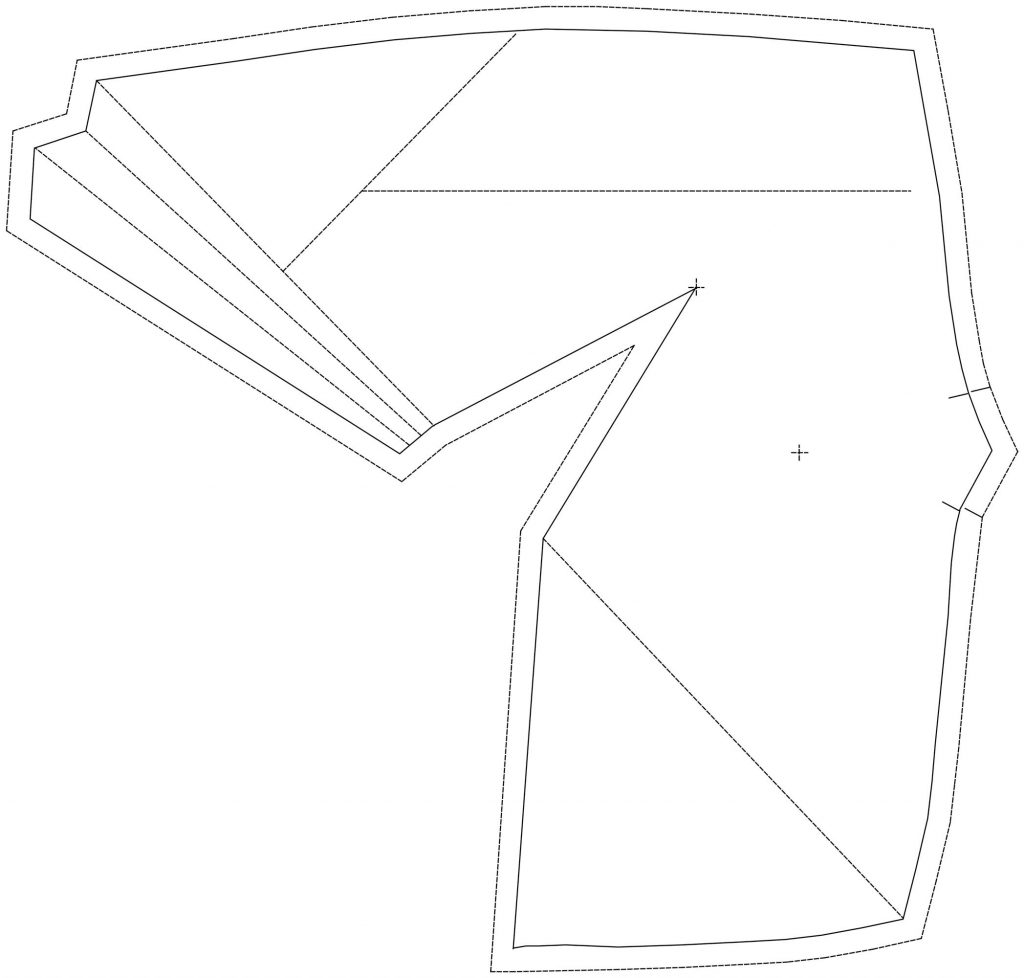This ‘Kestos’ style bra arguably has the simplest pattern out of the MA students’ selections, with this triangle style bra relying on just two darts per cup for its shaping. Alberto Atalla’s greatest challenge in recreating this bra was in the accuracy of detail. The simplicity of the original design means there is fundamentally much less room for error and nowhere to hide minor flaws or workarounds.
Alongside the elevated level of accuracy required for this pattern there was also a need for an elevated accuracy of stitch. This bra contains many small details that aren’t visible from a distance: for example, the ‘jumped’ stitch at the bust apex, in what was originally a twin needle lockstitched tape. Alberto Atalla painstakingly recreated this minute detail using a single needle lockstitch machine.
Although the replica bra isn’t the same shade of pink as the original archive garment, it is impressively almost identical in terms of material quality, and how accurately all of the materials are colour matched to each other. Indeed, if not for the original maker’s stamp and the colour difference, the two bras would be near indistinguishable from one another.
